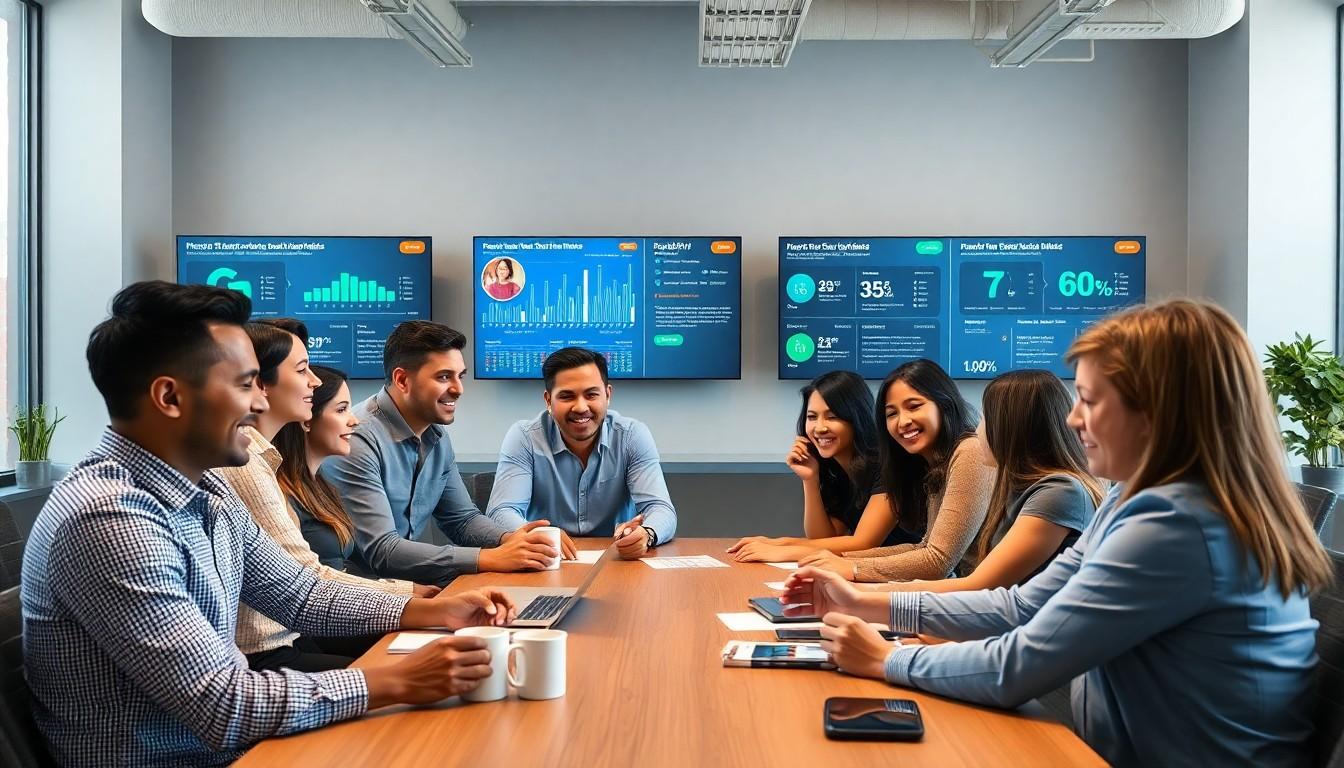In the world of corporate gaming, turning mundane tasks into thrilling quests is the secret sauce for engagement. Imagine employees battling deadlines like heroes in a video game, earning points and rewards for their achievements. Gamification isn’t just a buzzword; it’s a game-changer that transforms the workplace into a vibrant arena of motivation and productivity.
Explain Effective Gamification Strategies for Corporate Gaming
Gamification transforms work into engagement-driven activities. It integrates game-like elements into the corporate setting, making tasks more enjoyable.
Definition of Gamification
Gamification refers to the application of game design techniques in non-game contexts. This approach enhances user interaction by adding elements such as points, leaderboards, and challenges. Employees earn rewards for completing tasks, creating a competitive atmosphere. It leverages the natural desire for achievement, driving motivation and participation in workplace activities.
Importance of Gamification in Corporate Environments
Gamification plays a crucial role in enhancing employee engagement. Companies report increased productivity levels when implementing gamified systems. Engaging employees through game mechanics leads to improved performance and job satisfaction. Furthermore, enhanced collaboration among team members often results from competitive elements that gamification introduces. It provides tangible metrics to monitor progress and success in achieving corporate goals.
Key Elements of Effective Gamification Strategies

Effective gamification strategies rely on several key elements that boost employee engagement and productivity. These elements create a more dynamic and enjoyable work environment.
Goal Setting and Feedback
Clear goal setting guides employees toward desired outcomes. Specific, measurable goals motivate individuals and provide direction. Consistent feedback reinforces progress, allowing employees to adjust their approaches. Regular check-ins on achievements enhance accountability. By aligning personal goals with corporate objectives, employees experience a stronger sense of purpose. Positive reinforcement through recognition also strengthens motivation, encouraging employees to strive for excellence.
Progress Tracking and Rewards
Visible progress tracking encourages employees to engage with tasks actively. Tools like dashboards and scoreboards display achievements and milestones. These tools create a sense of accomplishment and foster healthy competition. Reward systems, such as points or badges, highlight achievements and keep motivation high. Timely and meaningful rewards enhance the overall experience. Employees feel valued and appreciated, making them more likely to stay committed to their goals while enjoying the gamified elements of their work.
Competition and Collaboration
Creating a balance between competition and collaboration enhances team dynamics. Competitive elements, like leaderboards, stimulate motivation among employees. Friendly competition drives individuals to perform better, pushing them to reach their potential. In contrast, collaboration promotes teamwork and communication. Team-based challenges align individual efforts toward common objectives, amplifying collective success. Recognizing both competitive achievements and collaborative efforts fosters a culture of support while motivating employees to excel.
Implementing Gamification Strategies
Implementing effective gamification strategies involves several key elements that enhance employee engagement and productivity.
Identifying Target Audience
Understanding the target audience plays a crucial role in shaping gamification efforts. Tailoring approaches to fit the preferences and motivations of employees increases the likelihood of success. Conducting surveys helps gather insights into what employees find engaging. Segmentation of employees based on roles or departments enables more personalized experiences. Fostering inclusion ensures that all employees feel involved in the gamification process. Regular feedback from participants further refines understanding and adaptation of strategies to meet their needs.
Designing Engaging Content
Creating engaging content becomes the foundation of any gamification initiative. Utilizing storytelling techniques captivates the audience and makes tasks relatable. Incorporating challenges that align with employees’ skills keeps them interested and motivated. Employing diverse formats, such as quizzes or interactive simulations, caters to different learning styles. Offering varying levels of difficulty allows for progression, ensuring that all employees find suitable challenges. Recognizing achievements boosts morale, as employees are more likely to remain engaged when their efforts receive acknowledgment.
Selecting Appropriate Technologies
Choosing the right technologies enhances gamification experiences. Platforms that support various game mechanics, such as points and leaderboards, can improve user interaction. Mobile accessibility ensures employees can participate anytime, anywhere, further increasing engagement. Data tracking features in technology provide valuable insights into employee performance and progress. Integrating existing tools can minimize the learning curve and facilitate smoother adoption. Continuous updates and iterations keep the gamification strategy fresh, reducing the risk of stagnation in engagement levels.
Measuring Success of Gamification Efforts
Measuring the success of gamification strategies involves evaluating various metrics. Key performance indicators provide insights into employee engagement and productivity levels.
Metrics to Consider
Assess participation rates, tracking how many employees engage with the gamified elements. Analyze completion rates for tasks, revealing how effectively employees finish their assignments. Consider feedback scores to understand employee sentiment towards the gamification strategies. Review reward redemption rates to gauge how effectively incentives drive actions. Identify any changes in productivity metrics, quantifying shifts in performance following gamification implementation.
Analyzing User Engagement and Performance
Examine user engagement through activity logs, highlighting interaction frequency and duration. Track leaderboard positions, showcasing competitive dynamics among employees. Collect qualitative feedback to gather insights about user experiences and preferences. Evaluate collaboration metrics to understand how often teams work together on challenges. Measure task completion times, providing a clear picture of enhanced efficiency driven by gamified activities.
Challenges in Gamification Implementation
Implementing gamification comes with its own set of challenges. Organizations often encounter difficulties in integrating game-like elements seamlessly into existing workflows.
Common Pitfalls
Ignoring employee feedback poses a significant risk. Organizations that neglect to consider user input may create experiences that fail to resonate. Additionally, unclear goals often undermine motivation, leading to confusion rather than engagement. Companies that overcomplicate game mechanics risk alienating users; simplicity generally enhances participation. Lastly, focusing too much on competition can foster a negative atmosphere, detracting from teamwork and collaboration. Recognizing these pitfalls allows for adjustments in strategy to enhance effectiveness.
Overcoming Resistance to Change
Resistance to change frequently arises during gamification implementation. Engaging leadership support is essential for fostering a culture receptive to new strategies. Involving employees in the design process helps create a sense of ownership, which can increase buy-in. Transparent communication about the benefits of gamification mitigates skepticism and encourages openness. Consistent training and resources equip employees to adapt and thrive in a gamified environment. When organizations tackle resistance with proactive strategies, the transition to gamification becomes smoother and more successful.
Fulfilling Corporate Culture
Effective gamification strategies can significantly enhance employee engagement and productivity in corporate settings. By integrating game elements into everyday tasks, organizations create an environment where employees feel motivated and valued. The focus on clear goals and continuous feedback ensures that individuals remain on track and inspired to achieve their objectives.
Balancing competition with collaboration fosters teamwork while keeping motivation levels high. Tailoring gamification approaches to fit employees’ preferences and leveraging the right technologies can further elevate the experience. Regular updates and careful measurement of success metrics allow companies to refine their strategies, ensuring they remain effective over time. Embracing these strategies not only transforms the workplace but also paves the way for a more dynamic and fulfilling corporate culture.

